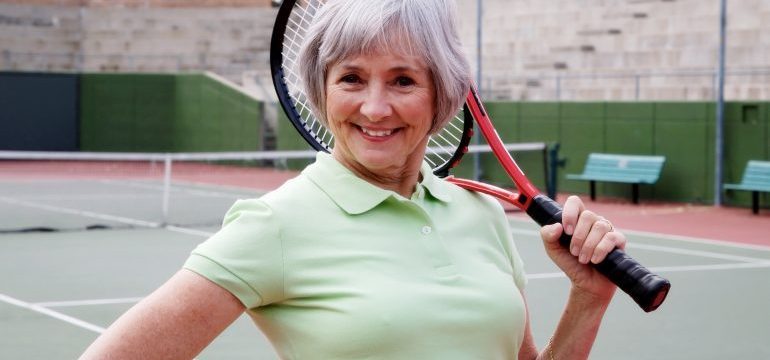Active adult communities are for healthy seniors who are in search of a vibrant lifestyle with lots of leisure activity options.
Age requirements. There are two types of active adult communities. One is the age restricted community, where at least 80 percent of the occupied homes must have a resident aged 55 or older. The other, age targeted communities, market to the 55-plus crowd, but have no age requirements. Some residents of active adult communities are not fully retired.
Resort-like atmosphere. As the name implies, active adult communities are for seniors who are still very much on the go. With a resort-like atmosphere, they are abuzz with activities: golf, tennis, swimming, a clubhouse hosting social events, hike and bike trails, movie theaters, hair salons and much more. The wide range of activities is the most attractive feature for most seniors.
Focus on fitness. Since the residents are still vigorous and vital, there is an emphasis on encouraging healthy habits, with exercise classes, fitness centers and recreation rooms. Maintaining mental and emotional sharpness is encouraged through book clubs, religious studies, classes and volunteer work.
Location. Active adult communities have sprung up near tourist destination towns and cities with a reputation for great food and entertainment. Southern states such as Florida, with balmy weather most of the year, are a natural place for such communities.
The homes. In these communities, residents typically buy their homes. Most often it is a single-family stand-alone home, although sometimes townhomes or condominiums are available. The homes are usually single story and have accommodations for aging in place such as wider doorways, grab bars in bathrooms and lever handles on doors and faucets accommodating those with diminished dexterity.
These communities often are gated and may have onsite security patrols. Landscape maintenance is provided as is some repairs of the outside of homes and common areas.
The costs. Home prices are driven by market conditions for real estate in the area — just like any other housing. The cost of the homeowner association dues is higher than the average neighborhood. Active adult communities have extensive amenities, grounds keeping, security, social events and other operating costs to be covered. Often these are “planned use developments” where maintenance of the roads, street lights and other aspects fall to the homeowners, not to the local government, requiring a reserve fund set aside for future upkeep.


